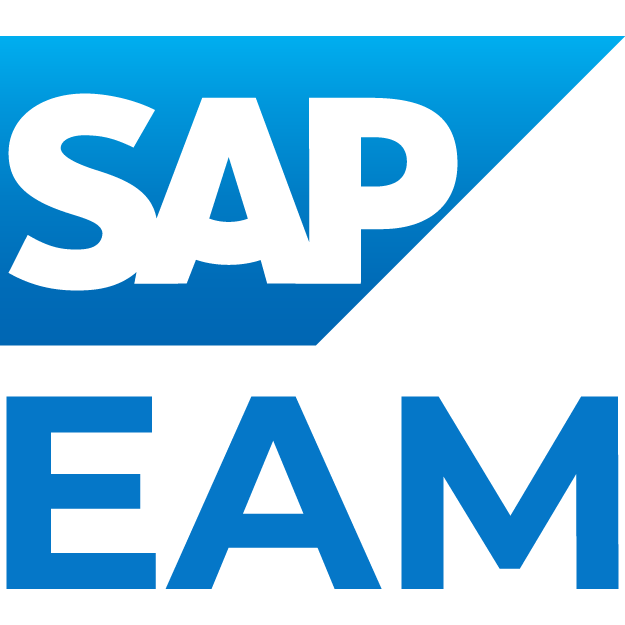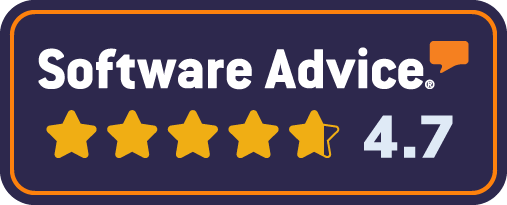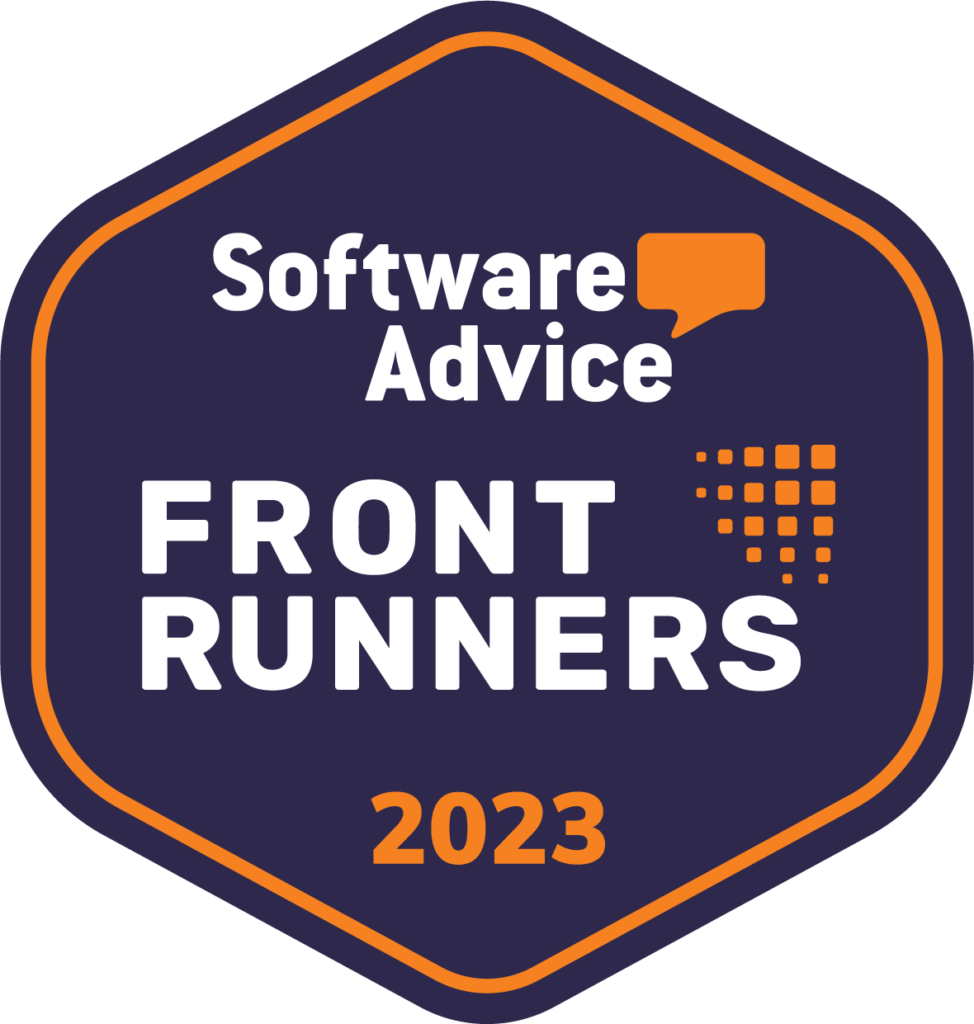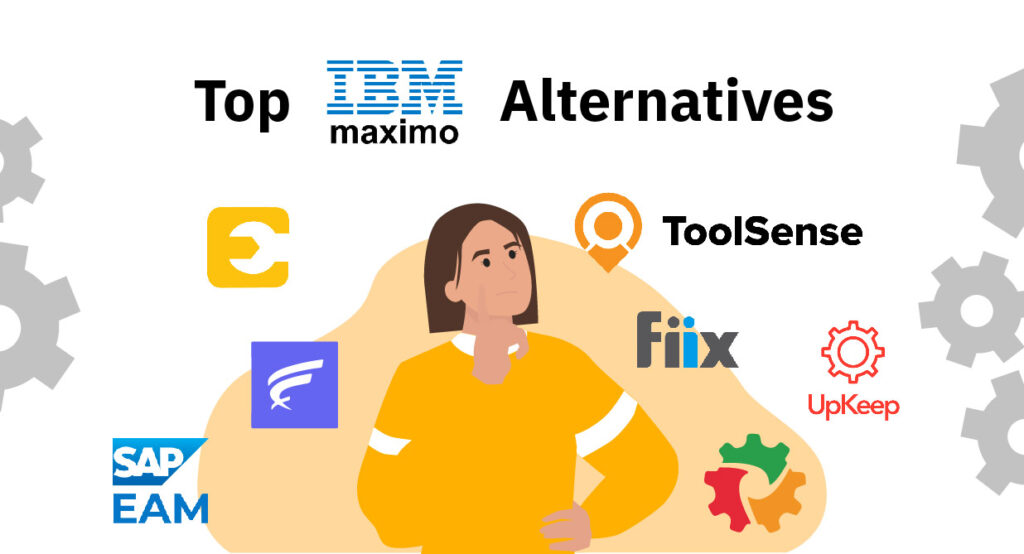
Are you looking for IBM Maximo alternatives because of their complexity and high costs? You’re not alone. Many asset-intensive businesses struggle with finding an enterprise asset management solution that balances power with usability. The good news: today’s market offers numerous alternatives that might suit your operational needs while reducing implementation time and overall costs. Let’s explore the best IBM Maximo alternatives for 2025.
Our Top Picks
Key Takeaways
- IBM Maximo alternatives: Companies across asset-intensive industries are increasingly seeking cost-effective IBM Maximo alternatives that offer greater flexibility and user-friendly interfaces for modern asset management.
- Leading solutions deliver comprehensive features: Top alternatives like ToolSense, SAP EAM, and UpKeep provide robust capabilities including predictive maintenance, seamless integration options, and comprehensive asset tracking functionality.
- Decision factors extend beyond price: When choosing an asset management solution, considerations such as total cost of ownership, interface usability, mobile capabilities, and alignment with specific business needs are crucial for making an informed decision.
- ToolSense transforms implementation experience: Unlike traditional solutions that require months of setup, ToolSense offers rapid deployment with QR code-based asset identification, no-account issue reporting, and IoT integration that delivers immediate operational benefits while reducing costs by up to 20%.
What Exactly Does IMB Maximo Do?
IBM Maximo is an enterprise asset management (EAM) system designed to enhance decision-making through effective asset optimization and resource management. It offers comprehensive asset lifecycle management, allowing organizations to manage assets from procurement to decommissioning. This ensures that all aspects of an asset’s life are covered, providing real-time insights and enabling better decision-making.
One of Maximo’s standout features is its Work Order Intelligence, which utilizes generative AI to expedite work approvals and improve data accuracy. This feature helps organizations reduce operational costs and enhance safety management by integrating industry best practices. Additionally, Maximo enables real-time access to IoT data, which enhances maintenance strategies and reduces unexpected asset downtime.
Supporting compliance with health, safety, and environmental regulations, IBM Maximo enhances risk management and helps organizations maintain high standards of operational efficiency and safety, making it a powerful asset management tool.
Managing your assets shouldn’t be hard. That’s why Excel, WhatsApp or Pen & Paper are not the right tools to efficiently manage your asset operations. No matter the manufacturer or type—with ToolSense you are good to go.
Top 7 IBM Maximo Alternatives for Asset Management
For businesses exploring IBM Maximo alternatives, it’s important to find solutions with robust asset management capabilities, user-friendly interfaces, and cost-effective pricing. Here are some top alternatives for optimizing asset management processes.
These alternatives have been selected based on their ability to provide comprehensive asset tracking, enhance asset performance, and integrate seamlessly with existing enterprise systems. Each offers unique features that cater to different business needs, making them suitable choices for organizations seeking flexible and efficient asset management software.
The following sections detail the specifics of each alternative, including ToolSense, SAP EAM, FieldEx, Fiix CMMS, eMaint, UpKeep, and Limble CMMS, covering their key features, benefits, and comparisons to IBM Maximo.
In this overview, we will be introducing the top maintenance management software solutions in the market, each excelling in different aspects to cater to various organizational requirements. Read on to discover the best solution for your organization’s maintenance needs.
ToolSense (#1)
ToolSense is a robust and user-friendly CMMS and repair and maintenance software, meticulously designed to assist businesses and maintenance managers in managing maintenance processes for a wide array of equipment. ToolSense enhances asset management by boosting productivity and reducing manual processes and downtime. ToolSense’s unique feature of QR codes on every asset facilitates quick and easy issue reporting, eliminating the need for duplicated data and providing a centralized, synchronized system that saves time and boosts efficiency. Additionally, ToolSense allows the combination of motorized and non-motorized equipment on one dashboard, offering a complete view of all assets.
ToolSense also enables tracking of everything that changes an asset’s status and organizes communication efficiently among all involved parties. This real-time visibility and intuitive interface make ToolSense a highly effective tool for asset management.
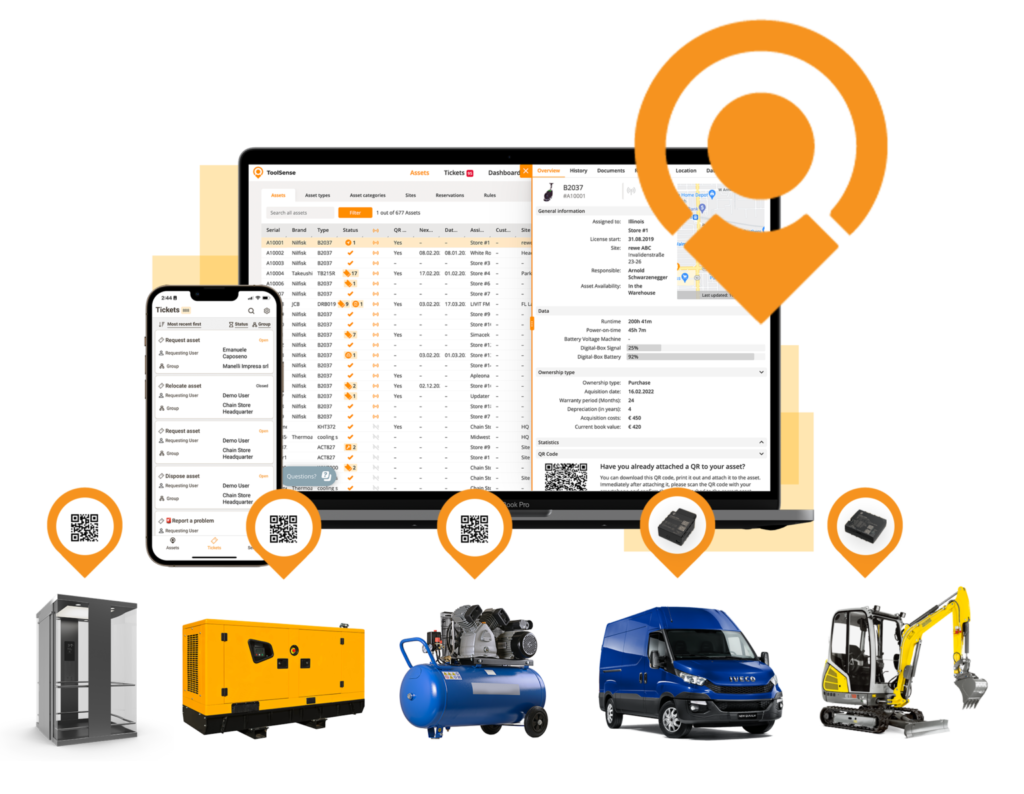
Features:
- Real-time vehicle and equipment tracking
- Automated maintenance scheduling based on fuel consumption data
- Custom forms and checklists for fuel-related inspections
- Comprehensive analytics and reporting capabilities
- Mobile app for on-the-go management and fuel transaction approval
- Integration capabilities with existing fleet management and ERP systems
- SSO, Integrations & Languages
- Equipment Safety Inspections
- Asset Lifecycle Processes
Pros:
- Centralized, synchronized system saves time and boosts efficiency
- Facilitates quick and easy issue reporting
- Offers a complete view of all assets
- Efficient communication among involved parties
Cons:
- May require initial setup time for integrating QR codes
- Potential learning curve for users new to the system
Pricing:
Free 30-day trial available. There is also an option for a free personal tour as guided walk-through to get to know the software. All prices are individualized and tailored to the specific needs of each customer and available upon request.
Rating:
- Functionality: 4.5/5
- Ease of Use: 4.5/5
- Integration: 5/5
- Support: 5/5
- Value for Money: 5/5
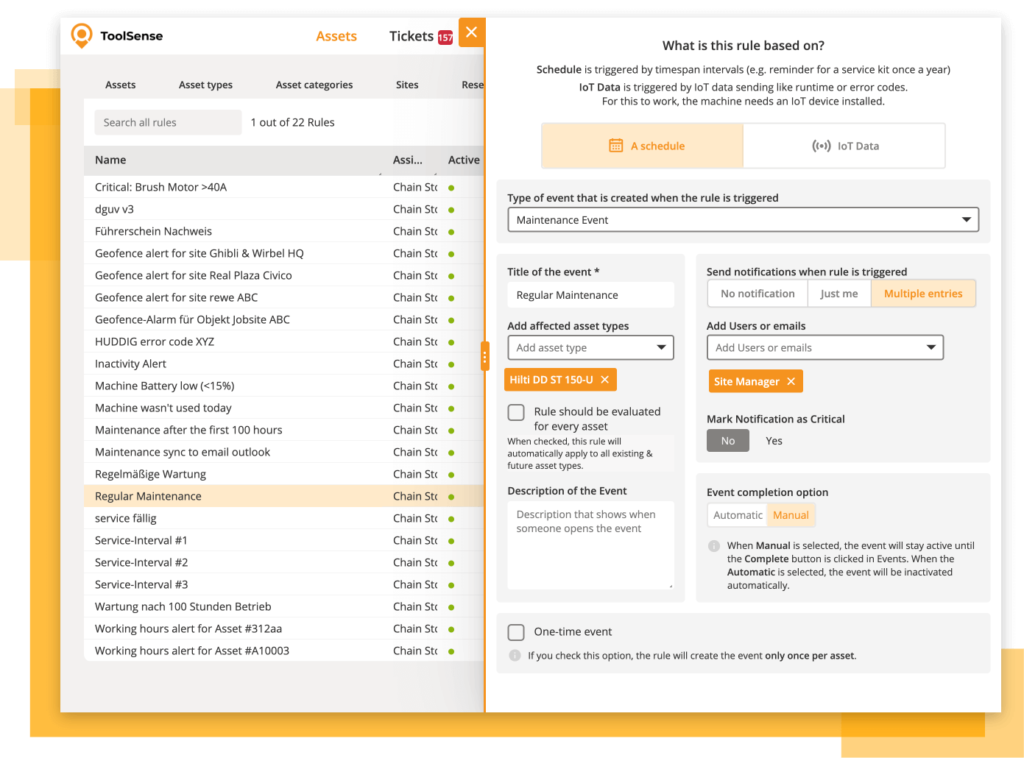
ToolSense is trusted by 700+ companies
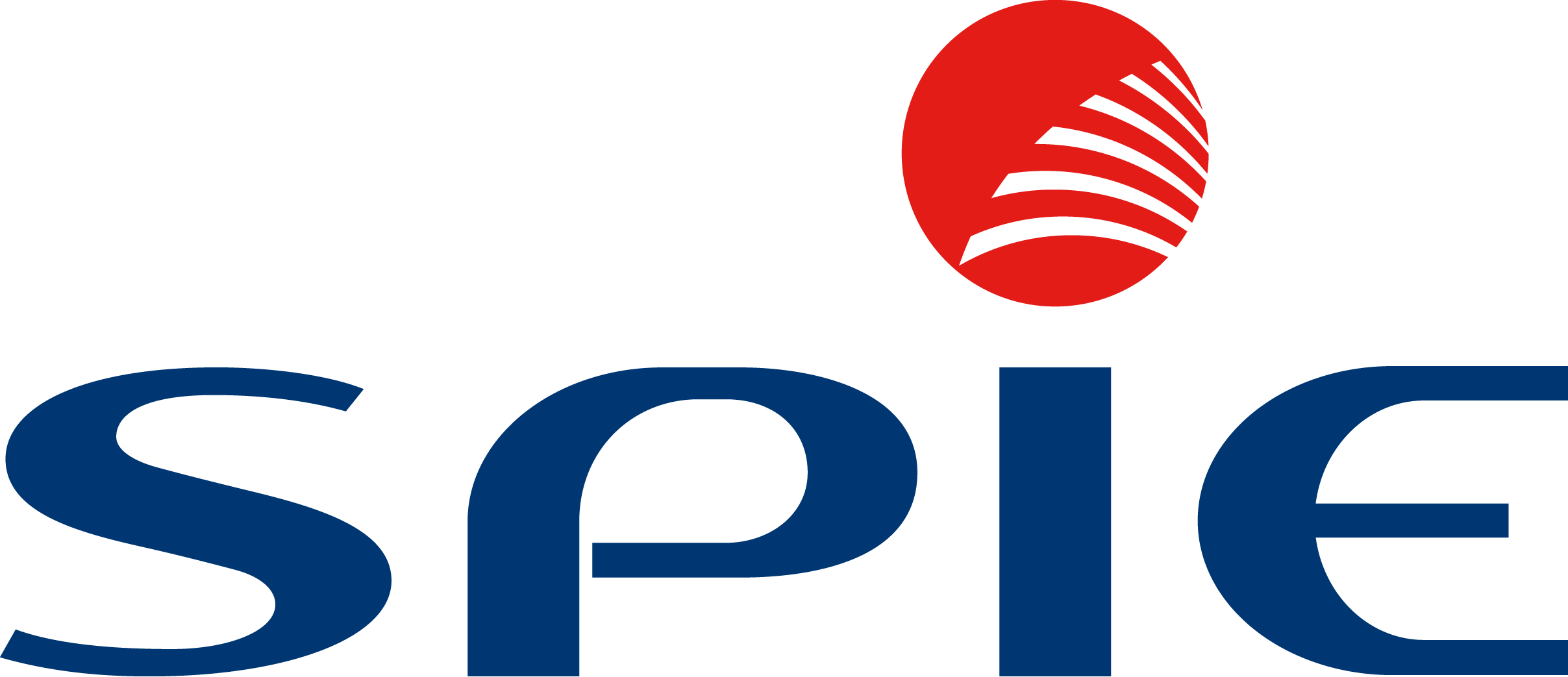

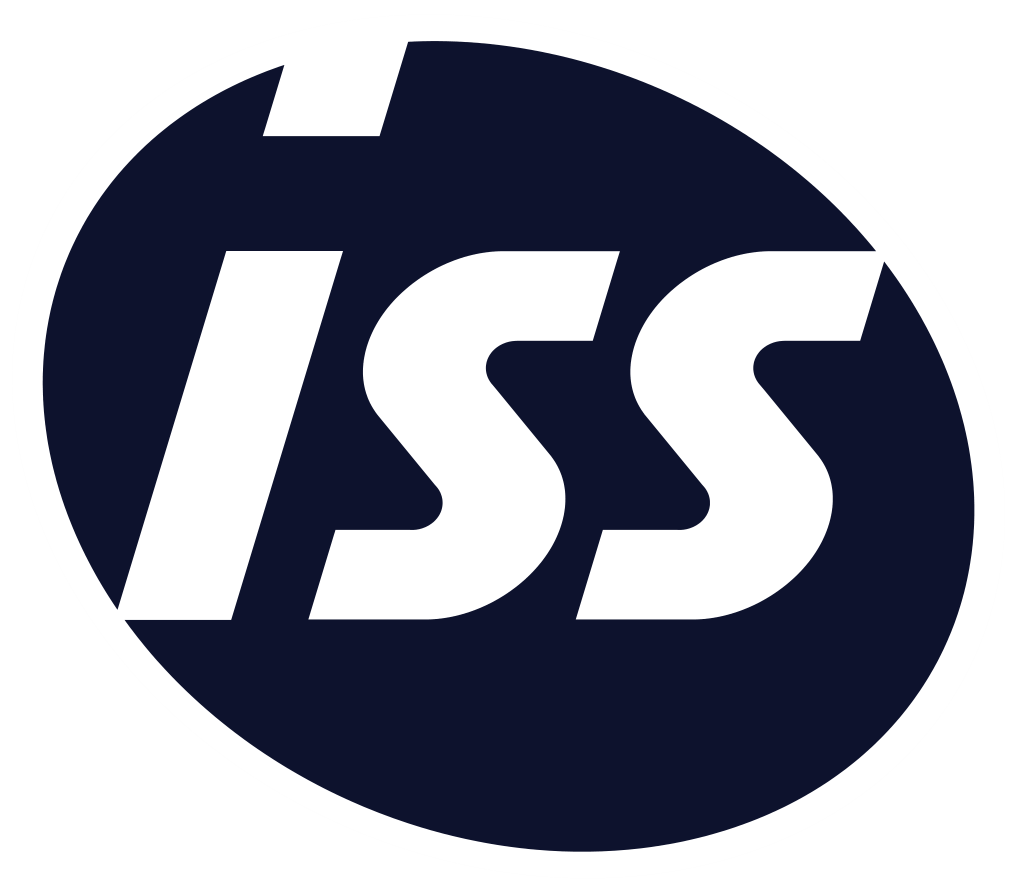
SAP EAM (#2)
SAP EAM manages physical assets throughout their lifecycle, including planning, procurement, maintenance operations, and disposal. This comprehensive approach enhances operational efficiency and reduces costs with predictive maintenance and analytics.
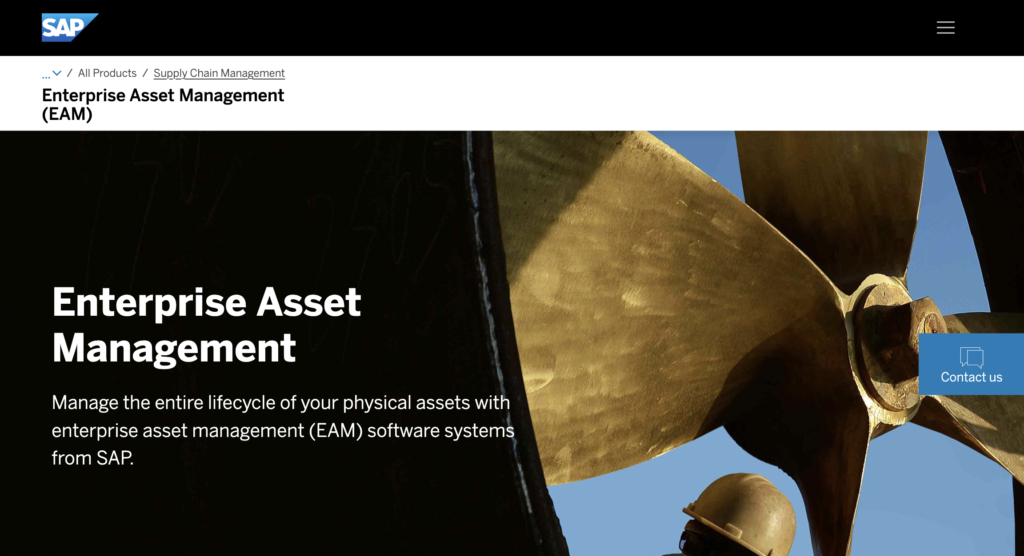
Features:
- Comprehensive lifecycle management
- Predictive maintenance and analytics
- Collaboration across departments
- Evolving towards cloud deployment
- Regulatory compliance facilitation
Pros:
- Reduces costs with predictive maintenance
- Robust solution for large enterprises
- Supports regulatory compliance
Cons:
- Implementation typically requires specialized SAP consultants, significantly increasing costs
- Mobile functionality often lags behind more modern solutions
- License structure can be confusing and lead to unexpected costs
- Complexity can be challenging for some users
- Transition to cloud deployment may involve additional costs
Pricing:
Pricing is available upon request.
Rating:
- Functionality: 4/5
- Ease of Use: 4/5
- Integration: 4/5
- Support: 4/5
- Value for Money: 3/5
FieldEx (#3)
FieldEx, a field service management and maintenance software, enhances asset performance through predictive maintenance. It features AI-driven automation, predictive analytics, an intuitive interface, and mobile accessibility, making it a powerful field asset management tool.
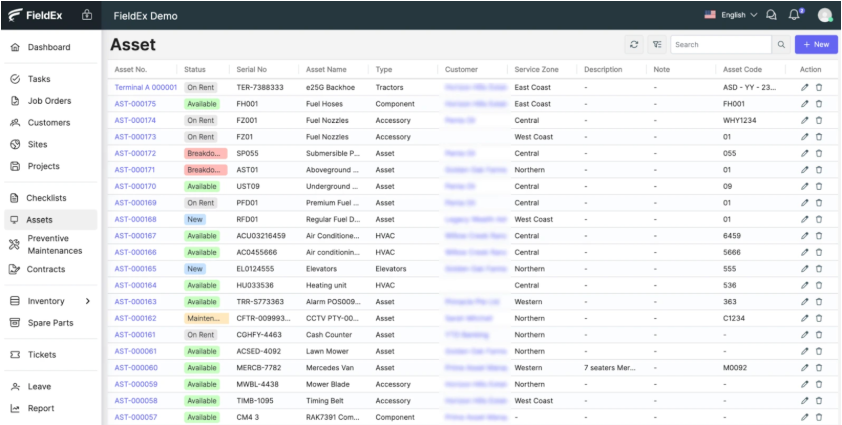
Features:
- AI-driven automation
- Predictive analytics
- Intuitive interface
- Mobile accessibility
- Smart scheduling
- Inventory management
- Real-time visibility
Pros:
- Enhances asset performance
- Improves task scheduling and asset monitoring
- Provides real-time insights into asset conditions
Cons:
- May require initial setup and training for optimal use
- Higher pricing plans could be costly for smaller organizations
- Limited integration capabilities with specialized industry tools
- Data export capabilities are restrictive compared to competitors
- Reporting features lack customization options and flexibility
Pricing:
Free for startups (max. 10 users), Plus: $35/user/month for small teams (min. 10 users, 44% off until June), Advanced: $49/user/month for larger teams (min. 10 users, 35% off until June).
Rating:
- Functionality: 4.5/5
- Ease of Use: 3/5
- Integration: 4/5
- Support: 4/5
- Value for Money: 3/5
Fiix CMMS (#4)
Fiix CMMS is a cloud-based maintenance management platform that enhances maintenance efficiency and provides AI-driven insights. It is ideal for multi-site operations, helping businesses manage assets across multiple locations. This makes it a versatile solution for organizations with decentralized operations.
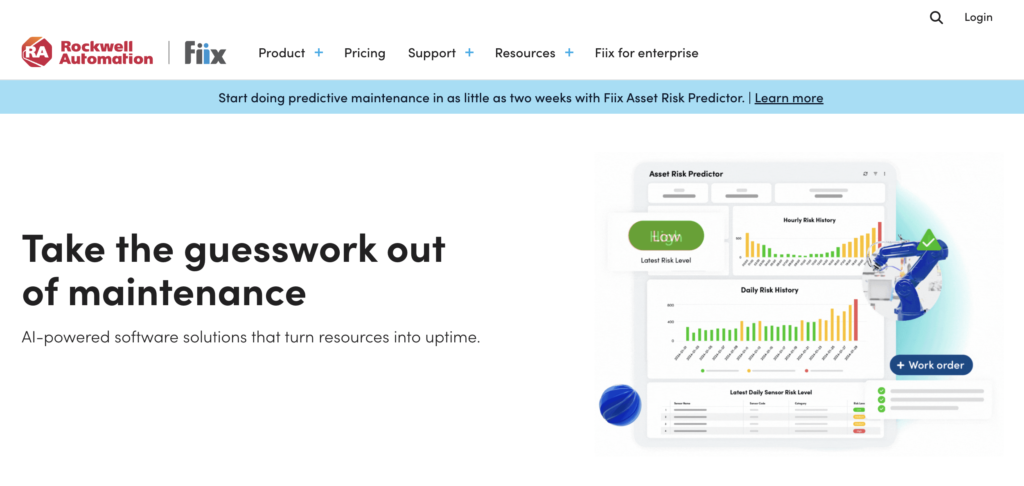
Features:
- Cloud-based maintenance management
- AI-driven insights
- Multi-site asset management
- Predictive maintenance
- Integration with existing enterprise systems
- Comprehensive asset tracking
Pros:
- Enhances maintenance efficiency
- Reduces downtime and extends asset lifespan
- Versatile for decentralized operations
- Provides real-time insights for better decision-making
Cons:
- Initial setup and training may be required
- Subscription costs could be high for smaller organizations
- May require integration with existing systems for optimal use
- Advanced analytics features require premium tiers
- Limited offline capabilities in the mobile app
- Inventory management capabilities are basic compared to specialized solutions
Pricing:
Free: $0 with limited users (25 active PMs, unlimited service requests, work orders, asset management), Basic: $45/user/month (unlimited PMs, reports, resource scheduling, email/phone support), Professional: $75/user/month (multi-site management, nested PMs, custom analytics), Enterprise: Custom pricing with advanced integrations and customization options.
Rating:
- Functionality: 3/5
- Ease of Use: 4/5
- Integration: 4.5/5
- Support: 4/5
- Value for Money: 4/5
eMaint (#5)
eMaint is a flexible and robust alternative to IBM Maximo, known for its maintenance management capabilities. It is recognized for its affordability and customizable maintenance workflows, making it well-suited for manufacturing, facilities management, and utilities. eMaint assists teams with scheduling work orders, assessing inventories, and reporting on maintenance KPIs, integrating well with existing maintenance practices. Although some mobile features of eMaint are limited, potentially affecting on-the-go accessibility, it remains a strong, cost-effective, and customizable maintenance management solution.
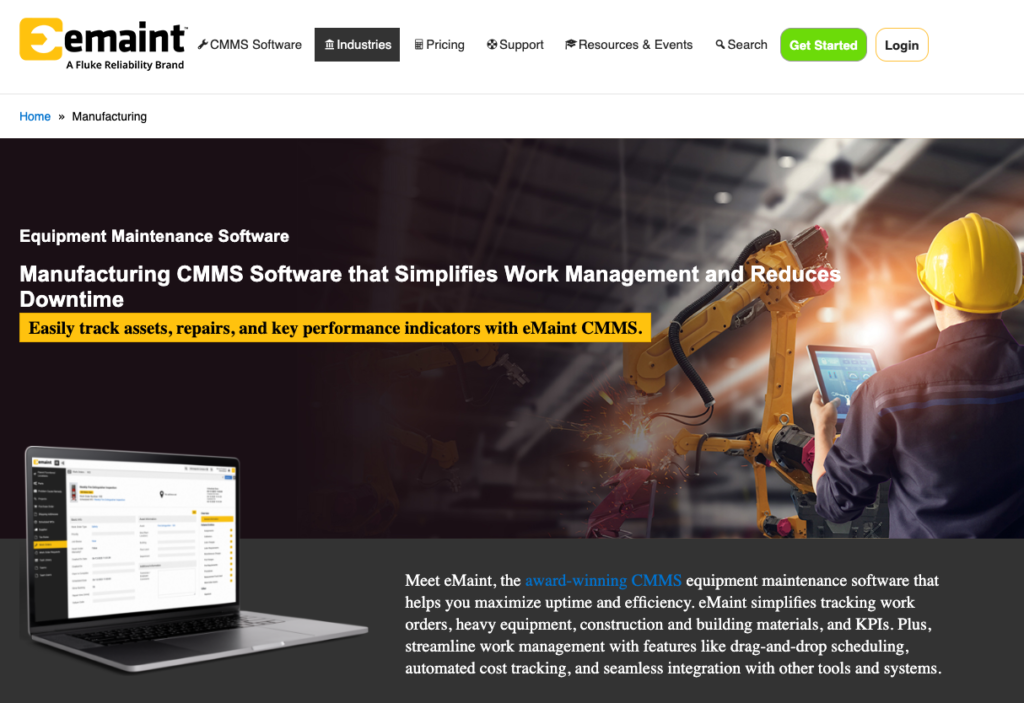
Features:
- Customizable maintenance workflows
- Scheduling work orders
- Inventory assessment
- Maintenance KPI reporting
- Integration with existing maintenance practices
Pros:
- Affordable and cost-effective
- Highly customizable
- Suitable for various industries such as manufacturing and utilities
Cons:
- Limited mobile features
- Potentially affects on-the-go accessibility
- Integration with financial systems often requires workarounds
- Pricing increases significantly as you add more users
Pricing:
Team: $69/user/month (3 user package, standard CMMS features, unlimited helpdesk support), Professional: $85/user/month (3+ users, advanced feature set, dedicated account management), Enterprise: Custom quote for 5+ users (includes unlimited work request user logins, web API access).
Rating:
- Functionality: 4/5
- Ease of Use: 4/5
- Integration: 3/5
- Support: 4/5
- Value for Money: 3/5
Upkeep (#6)
UpKeep is known for its mobile-first approach, making it easier for field technicians to manage maintenance tasks directly from their devices. The platform offers features like work order management, asset tracking, and a user-friendly interface that appeals to many small to mid-sized businesses.
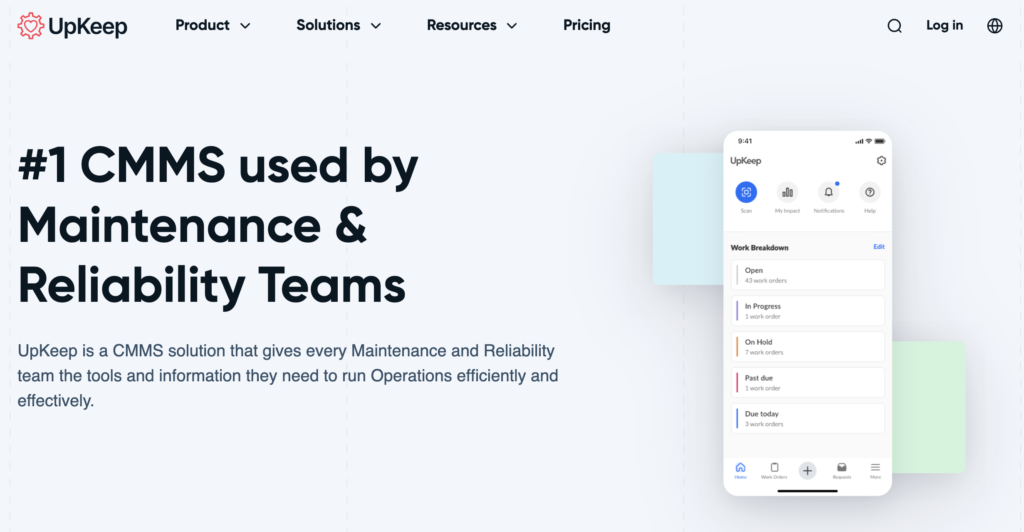
Features:
- Work order management
- Asset tracking
- User-friendly interface
- Integration with accounting and project management software
- Preventive maintenance scheduling
Pros:
- Easy integration with various business software
- Supports preventive maintenance to reduce downtime
- Flexible subscription-based pricing model
Cons:
- May require initial setup and training
- Subscription costs could add up for larger teams
- Limited capabilities for managing complex, multi-level asset hierarchies
Pricing:
Lite: $20/user/month (unlimited work orders, asset management, 24/7 support), Starter: $45/user/month (adds preventive maintenance, inventory management, time tracking), Professional: Custom pricing (adds multiple inventory lines, mobile offline mode, advanced analytics), Business+: Custom pricing (most popular plan with workflow automation, multi-site support, API access).
Rating:
- Functionality: 3.5/5
- Ease of Use: 4/5
- Integration: 3/5
- Support: 4/5
- Value for Money: 4/5
Limble CMMS (#7)
Limble CMMS offers an intuitive interface, strong customization options, faster implementation, and less complexity compared to traditional systems like IBM Maximo. It is designed to support both small teams and large enterprises in their maintenance efforts, making it a versatile and scalable solution for businesses of all sizes seeking to enhance their asset management processes.
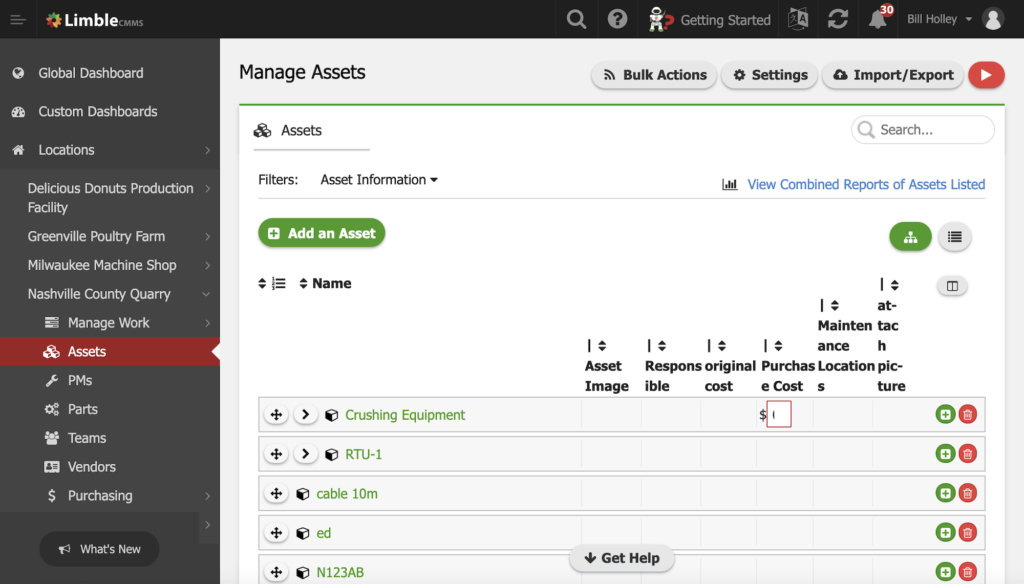
Features:
- Intuitive interface
- Strong customization options
- Offline mobile app
- Flexible user-friendly interface
- Scalable for small teams and large enterprises
Pros:
- Faster implementation
- Less complexity than traditional systems
- Supports both small and large businesses
- Highly customizable
Cons:
- May require initial user training
- Limited advanced features for highly specialized
- API access restricted to higher tier plans
- Limited options for customer-specific customizations
Pricing:
Standard: $28/user/month (preventative maintenance, real-time KPI reports), Premium+: $69/user/month (automated workflows, streamlined inventory management), Enterprise: Custom quote (multi-location support, advanced controls, integrations, customization).
Rating:
- Functionality: 3.5/5
- Ease of Use: 4/5
- Integration: 3/5
- Support: 4/5
- Value for Money: 4/5
Key Benefits of Implementing IBM Maximo Alternatives
Cost Reduction and Financial Flexibility
Switching to IBM Maximo alternatives can impact your bottom line. While Maximo often requires significant upfront investment and ongoing maintenance costs, alternatives provide more transparent and flexible pricing models. For mid-sized organizations, this financial flexibility can translate to savings of 30–40% in total cost of ownership. Additionally, many alternatives don’t require specialized technical consultants for implementation, further reducing your initial investment. With ToolSense, companies typically report saving up to 20% on their maintenance costs while benefiting from a more predictable monthly expense structure.

Enhanced User Experience and Adoption Rates
The complexity of IBM Maximo often leads to resistance among frontline workers, resulting in incomplete data entry and reduced system effectiveness. Modern alternatives prioritize intuitive interfaces that require minimal training. ToolSense takes user-friendliness to another level with its QR code scanning capability – allowing anyone to report issues without even creating an account. This approach dramatically increases system adoption rates, with customers reporting:
- 85% faster onboarding for new users
- Higher quality data collection from field workers
- Increased engagement across all organizational levels
- Simplified mobile access for technicians and operators
The result is more consistent usage and better quality data flowing into your asset management ecosystem.
Advanced Analytics and Operational Insights
Today’s leading IBM Maximo alternatives offer sophisticated analytical capabilities that transform raw asset data into actionable business intelligence. With features like AI-driven predictive maintenance algorithms and comprehensive performance dashboards, organizations can:
- Identify failure patterns before they cause downtime
- Optimize maintenance schedules based on actual usage data
- Track performance trends across equipment types and locations
- Generate regulatory compliance reports automatically
These insights enable proactive rather than reactive asset management, fundamentally changing how maintenance and operations teams function. When integrated with IoT sensors, solutions like ToolSense can provide real-time visibility into asset conditions, creating new opportunities for operational efficiency.
Tailored Solutions for Industry-Specific Needs
While IBM Maximo follows a one-size-fits-all approach, many alternatives offer industry-specific configurations and workflows. Whether you operate in facility management, construction, manufacturing, or logistics, today’s alternatives provide pre-configured templates and workflows designed for your specific challenges. This targeted approach means faster implementation, reduced customization needs, and better alignment with established industry best practices. For organizations in regulated industries, these tailored solutions often include built-in compliance tools that address specific requirements without extensive configuration.
How to Choose the Best IBM Maximo Alternative
To choose the best IBM Maximo alternative, consider factors such as cost, complexity, and specific industry needs. ToolSense, designed with user-friendliness as a core principle, ensures quick adaptation and effective asset management without the steep learning curve associated with enterprise solutions.
Flexible pricing structures are crucial when evaluating alternatives. ToolSense offers transparent, scalable pricing that adapts to organizations of different sizes and requirements. This allows businesses to find a solution that fits their financial constraints while still providing comprehensive asset management capabilities – with customers reporting up to 20% savings on maintenance costs after implementation.
ToolSense is trusted by 700+ companies



Consider the support provided during deployment; ToolSense offers dedicated implementation assistance and ongoing customer success management, ensuring smooth transitions and minimal disruption during the switch. Their approach of using simple QR codes for asset identification significantly reduces implementation time compared to traditional solutions, allowing teams to see immediate benefits while gradually expanding system usage.
Conclusion: Finding Your Ideal IBM Maximo Alternative
When evaluating IBM Maximo alternatives, ToolSense stands out with its uniquely intuitive QR code-based system that allows anyone to report issues without creating an account—dramatically increasing adoption rates across organizations. From a cost perspective, ToolSense provides exceptional value with transparent pricing that scales with your business. Customers typically report up to 20% savings on maintenance costs while benefiting from a predictable expense model without hidden fees or costly implementation consultants.
ToolSense uniquely bridges the gap between enterprise-grade functionality and user-friendly design. Its mobile-first approach ensures maintenance teams can access all critical functions from any device, even in areas with limited connectivity. In conclusion, while IBM Maximo offers robust capabilities, its high costs and complexity have driven many organizations to seek alternatives. ToolSense provides a powerful combination of features, intuitive design, and flexible pricing that addresses key pain points organizations experience with traditional EAM solutions.
FAQs
IBM Maximo is a solid choice for organizations looking for a comprehensive enterprise asset management solution. It offers robust features that enhance operational efficiency, streamline maintenance processes, and support regulatory compliance requirements, making it a valuable investment for businesses seeking to optimize their asset management strategies.
nd automated processes.
While both IBM Maximo and SAP serve business needs, they focus on different areas; Maximo specializes in enterprise asset management, while SAP is more comprehensive in enterprise resource planning (ERP). Maximo is ideal for detailed asset tracking and maintenance operations, whereas SAP provides a broader scope for managing various business processes.
The new name for IBM Maximo is IBM Maximo Manage, reflecting its integration into the broader IBM Maximo Application Suite. This rebranding underscores its role in providing enhanced asset management capabilities within a unified platform.
The main disadvantages of IBM Maximo include its high implementation and maintenance costs, which can be a barrier for smaller organizations. Additionally, its complexity may pose a challenge, requiring significant training and adaptation for users to fully leverage its capabilities.
ToolSense simplifies asset management by boosting productivity, reducing manual data entry, and minimizing downtime with its comprehensive asset tracking and inventory insights. Its intuitive interface and real-time visibility make it an efficient and user-friendly option for businesses seeking to enhance their maintenance operations.
The software solutions and the respective rankings presented in this article reflect both our opinion and that of our customers. While we can’t claim to have looked at them with complete objectivity, we do believe we offer a top-notch solution. Not convinced yet? We warmly invite you to form your view during our complimentary 30-day trial period.


